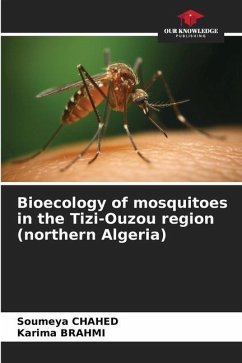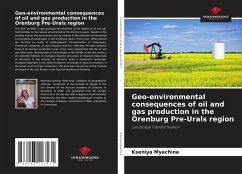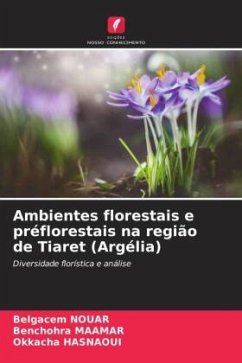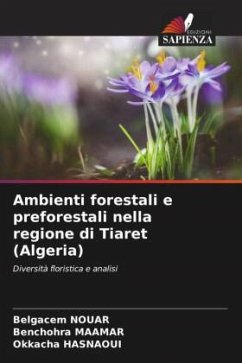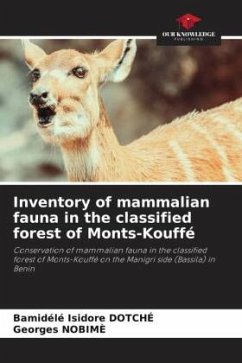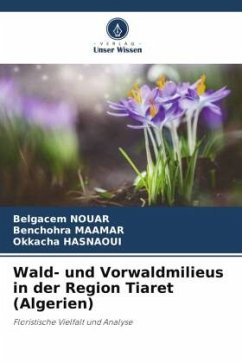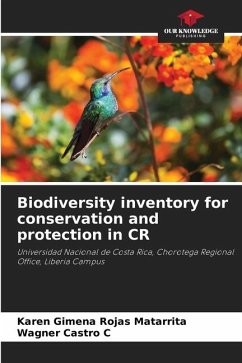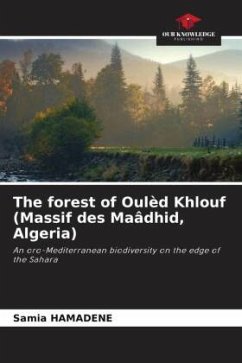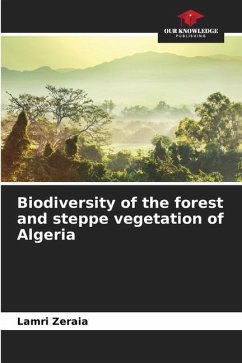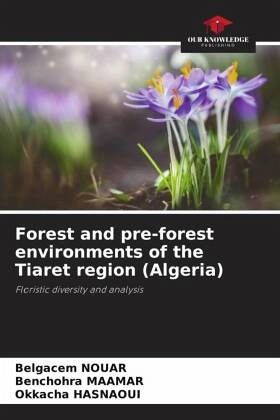
Forest and pre-forest environments of the Tiaret region (Algeria)
Floristic diversity and analysis
Versandkostenfrei!
Versandfertig in 6-10 Tagen
29,99 €
inkl. MwSt.

PAYBACK Punkte
15 °P sammeln!
The present work was carried out at the level of the forest and pre-forest environments of the region of Tiaret (Algeria) by a phytoecological approach which we based on floristic, biogeographic and statistical criteria for the purpose of appreciating and analyzing the phytodiversity of these ecosystems. The floristic inventory reveals the presence of 300 taxa, divided into 53 families, this flora is morphologically characterized by a large presence of annual herbaceous with (56.3%), biologically by a clear dominance of Therophytes with (54%), and biogeographically by the predominance of speci...
The present work was carried out at the level of the forest and pre-forest environments of the region of Tiaret (Algeria) by a phytoecological approach which we based on floristic, biogeographic and statistical criteria for the purpose of appreciating and analyzing the phytodiversity of these ecosystems. The floristic inventory reveals the presence of 300 taxa, divided into 53 families, this flora is morphologically characterized by a large presence of annual herbaceous with (56.3%), biologically by a clear dominance of Therophytes with (54%), and biogeographically by the predominance of species of Mediterranean biogeographic type (51.7%). For all the flora studied, the calculation of ecological indices showed that the Shannon index is equal (H = 4.6), Pielou's equitability (J = 0.9), Simpson's index (1- D = 0.98) and Jaccard's similarity coefficient (S) shows a low similarity in the floristic composition of the eight (08) stations studied. While, the global index of disturbance (PI = 63%) reflects an opening of the environments accompanied by the installation of species that adapt to the climatic-anthropozoic conditions of the environment.



